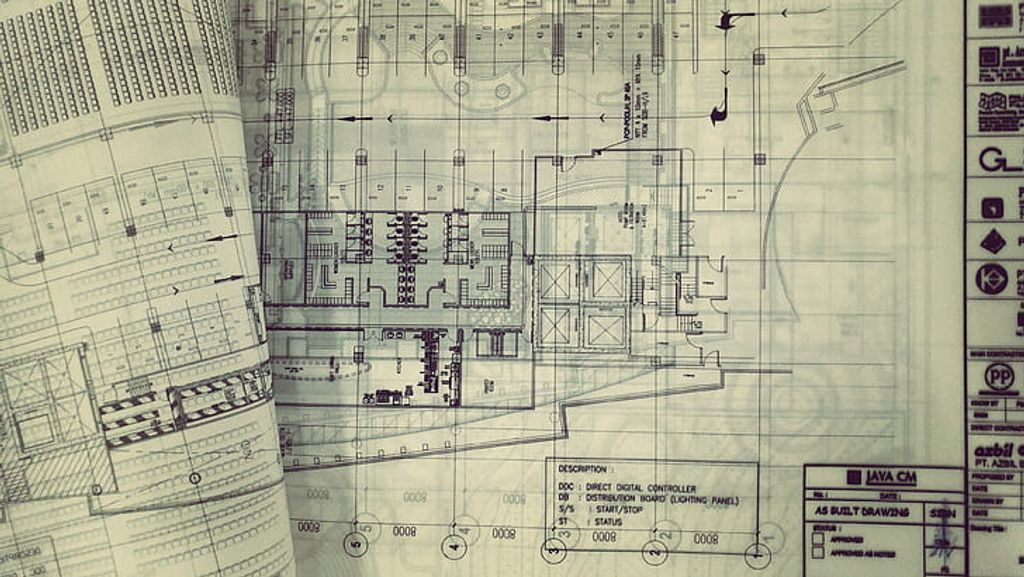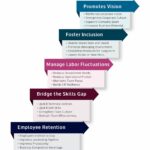The initial steps of a successful project involve understanding the project requirements, creating a project plan, building a competent project team, managing project risks, monitoring and controlling project progress, ensuring quality assurance, and managing project stakeholders. These steps are essential for setting the foundation of a project and ensuring its success. Here are the key takeaways:
Key Takeaways
- Identify the project goals and stakeholders
- Analyze stakeholder needs and define scope and deliverables
- Develop a work breakdown structure and create a project schedule
- Identify key roles and responsibilities and recruit team members
- Establish effective communication channels and manage project risks
Understanding the Project Requirements

Identifying the Project Goals
Establish specific, measurable, achievable, and relevant goals. Task breakdown: Structure the project into smaller, manageable tasks. Identify dependencies: Look at the sequence of tasks and identify dependencies. Resource planning: Identify and allocate the necessary resources, such as people, materials, and budget. Timeline development: Create a realistic timeline with milestones and deadlines for each phase of the project. Risk assessment: Identify potential risks and prepare for contingencies. Scope definition: Define the project’s vision, objectives, and deliverables clearly.
Analyzing Stakeholder Needs
Analyzing stakeholder needs is a crucial step in understanding the requirements of a project. It involves gathering information from stakeholders to determine what needs to be delivered and ensuring effective communication throughout the project. By actively listening to stakeholders and clarifying their requirements, project teams can ensure that all parties are on the same page and working towards a common goal. This process requires strong communication skills and the ability to identify and address any concerns or challenges that may arise.
Defining Scope and Deliverables
Defining the scope and deliverables is a crucial step in project planning. It involves deciding on project goals, tasks, costs, and deadlines. The scope of a project determines its value, which includes tangible resources and intangible benefits such as goodwill and brand image. To ensure clarity and alignment, it is important to communicate the project scope to all stakeholders. This can be achieved through strong communication skills and clear requirements. Additionally, documenting major deliverables, both internal and external, helps in tracking progress and ensuring successful project implementation.
Creating a Project Plan
Developing a Work Breakdown Structure
Once you have a realistic project scope, you can start breaking your work packages into actionable tasks. Think of it as creating an action plan where you list all the functions and activities needed to complete the project. It’s important to sequence the activities in the right order. Some projects can follow a linear sequence from point A to B, C, D, and so on. In other projects, certain tasks can start simultaneously. And in certain projects, one task cannot start unless another is finished. Breaking down the project scope into smaller tasks, also known as ‘work packages’, simplifies project planning and management, facilitating coordination and improving efficiency.
Estimating Project Duration and Resources
Estimating the duration of a project is a crucial step in project planning. It allows you to determine how long your resources will be occupied and helps you assign them effectively. You want to avoid tying up your significant resources to a project for a long time, as it can impact other aspects of your organization. Additionally, accurately estimating project costs is essential to ensure the project’s viability and keep expenses under control. By estimating project costs accurately, you can determine if the project is feasible and make informed decisions. Lastly, estimating the duration of the project will help you plan and allocate resources efficiently.
Creating a Project Schedule
Once the project plan is completed, it is crucial to create a realistic timeline with milestones and deadlines for each phase of the project. This timeline will help you track the progress of the project and ensure that tasks are completed on time. One useful tool for organizing and visualizing project tasks is a PERT chart. PERT charts are especially helpful for complex projects as they show the sequence of tasks and identify dependencies. Another option is to use project timelines, which provide a visual representation of tasks or events over a specific period. This ensures that everyone involved in the project is aware of the different phases. Additionally, using process design software can help visualize the complex processes of your project. Choose the tools that work best for your team and make your project design phase smoother. Remember to leverage the features of a project management tool like ClickUp to track and manage your project effectively.
Building a Competent Project Team

Identifying Key Roles and Responsibilities
The key to project success lies in assigning the right roles and responsibilities to your team members. Ideally, a project team consists of the following roles:
- Project Manager: Responsible for planning, executing, and overseeing the project until its completion.
- Project Team Members: Developers, QA engineers, and other professionals who actively work on the project.
- Project Sponsor(s): Senior management members with a stake in the project’s outcome.
- Executive Sponsor: The primary stakeholder and ultimate decision-maker of the project.
- Business Analyst: Responsible for determining product-market fit and ensuring that the project adds value to the organization.
When writing your project implementation plan, assign these roles to the right people with the skills and experience to fulfill the project requirements. It is important to define the criteria for obtaining approvals at different stages of the project and develop a communication plan for sharing progress updates and approval requests. Additionally, identifying and defining measurable KPIs that align with the project objectives and breaking down the project timeline into significant milestones are crucial steps. Selecting appropriate tools and systems for monitoring activities is also essential. Build contingencies and backup plans for your project to account for unexpected challenges that may arise.
Recruiting and Selecting Team Members
Recruiting and selecting team members is a crucial step in building a high-performance team. A project team typically consists of various roles, including the Project Manager, developers, QA engineers, and other professionals who actively work on the project. It is important to carefully evaluate candidates based on their skills, experience, and fit with the project’s objectives. Here are some key considerations for recruiting and selecting team members:
- Define clear criteria for selecting team members
- Conduct thorough interviews and assessments
- Assess candidates’ technical expertise and ability to work collaboratively
- Consider cultural fit and alignment with the project’s values
- Provide opportunities for candidates to showcase their problem-solving and decision-making skills
Recruiting and selecting the right team members sets the foundation for a successful project. It ensures that the team has the necessary skills and capabilities to deliver high-quality results.
Establishing Effective Communication Channels
Establishing effective communication channels is crucial for the success of any project. It ensures that all team members, stakeholders, and contractors are on the same page and can easily exchange information and updates. By leveraging a project management tool, you can track deliverables, set priorities, and gain real-time insights into the project’s progress. Regular meetings and progress updates should be held to ensure everyone stays aligned with the project’s goals. Additionally, developing a communication plan for sharing progress updates and approval requests can streamline the communication process and keep all parties informed.
Managing Project Risks

Identifying Potential Risks
Identifying potential risks is a crucial step in project management. Risks can arise from various factors, such as insufficient resources, performance issues, or scope creep. To effectively manage these risks, it is important to:
- Define the project’s vision, objectives, and deliverables clearly
- Establish specific, measurable, achievable, and relevant goals
- Structure the project into smaller, manageable tasks
- Identify dependencies and allocate necessary resources
- Create a realistic timeline with milestones and deadlines
By understanding the risks and constraints associated with your project, you can develop mitigation strategies and ensure that everyone involved is on the same page. Utilizing project management tools and visual aids can also help track progress and identify issues in real-time. Remember, a comprehensive understanding of potential risks is essential for the successful completion of your project.
Assessing Risk Probability and Impact
Assessing risk probability and impact is a crucial step in project management. It allows you to identify potential risks and their potential impact on the project’s success. By evaluating the likelihood of each risk occurring and the severity of its consequences, you can prioritize your risk mitigation efforts. Mitigation strategies should be developed for high-risk events to minimize their impact. It is also important to establish trigger points that indicate when a risk has occurred, so that you can implement the appropriate response plan. Regular monitoring of the project environment is necessary to identify any changes that may affect the identified risks.
Developing Risk Mitigation Strategies
Once you have identified the potential risks for your project, it is crucial to develop effective mitigation strategies. A mitigation strategy involves creating a plan to minimize the impact of a risk event and ensure the project stays on track. By allocating the necessary resources and establishing trigger points to indicate when a risk has occurred, you can proactively address and mitigate the risks. It is also important to integrate the contingency plan into the overall project documentation and regularly monitor the project environment for any changes that may affect the identified risks. By following these steps, you can minimize the negative impact of risks and increase the chances of project success.
Monitoring and Controlling Project Progress
Tracking Project Tasks and Milestones
When tracking project tasks and milestones, it is important to establish clear and measurable objectives. Break down your deliverables into smaller, attainable parts to make them more achievable. Set realistic deadlines and specify them according to the task level to reduce the chances of delays. Rank the tasks in order of priority to ensure your team works on them on time. It is also crucial to establish effective communication channels to ensure everyone is on the same page. Consider leveraging a project management tool like ClickUp 3.0 to track your deliverables, set priorities, and gain real-time insights. Additionally, using tools like Gantt and PERT charts can help visualize project progress and processes.
Implementing Performance Metrics
Implementing performance metrics is crucial for tracking the progress of a project and evaluating the team’s performance. Key Performance Indicators (KPIs) are metrics that provide insights into the project’s progress and the team’s effectiveness. These metrics can include factors such as project milestones, task completion rates, and resource utilization. By regularly monitoring and analyzing these metrics, project managers can identify areas of improvement and take corrective actions if necessary. It is important to establish clear and measurable KPIs at the beginning of the project and regularly review them throughout the project lifecycle.
Taking Corrective Actions
When managing a project, it’s important to regularly track the progress of tasks and milestones. If the project’s progress isn’t aligned with the baselines, you might have to take corrective action. This way, you can quickly identify issues and overcome them before it’s too late.
To effectively take corrective actions, consider the following steps:
-
Finalize the project implementation plan: Once everything is in order, it’s time to finalize the plan and document everything with a knowledge management system. Share this final version with all team members, stakeholders, and involved parties to ensure everyone is on the same page.
-
Keep planning: Some projects may go differently than planned. In such cases, you’ll need to react quickly and change the plan accordingly. Continuously monitor the project’s progress and make adjustments as necessary.
-
Implement a contingency plan: Develop mitigation strategies for identified risks and allocate the necessary resources to implement them. Establish trigger points that indicate a risk has occurred and develop a detailed response plan for each identified risk.
Remember, taking corrective actions is crucial for ensuring the success of a project and minimizing potential risks and issues.
Ensuring Quality Assurance

Defining Quality Standards
Defining quality standards is a crucial step in ensuring the success of a project. Quality standards outline the criteria and expectations for the deliverables and processes involved in the project. These standards serve as benchmarks for measuring the quality of work and ensuring that it meets the desired level of excellence.
To define quality standards, it is important to consider the specific requirements and objectives of the project. This includes identifying the key performance indicators (KPIs) that will be used to assess the quality of the deliverables. KPIs can include factors such as accuracy, reliability, functionality, and user satisfaction.
Once the KPIs have been identified, it is necessary to establish clear and measurable metrics for each indicator. This allows for objective evaluation and comparison of the deliverables against the defined standards. The metrics should be specific, achievable, relevant, and time-bound.
In addition to metrics, it is also important to establish processes and procedures for quality assurance. This includes implementing regular quality checks and inspections to identify any deviations from the defined standards. It is crucial to have a systematic approach to address any issues or non-conformities that may arise.
By defining quality standards, project teams can ensure that the deliverables meet the desired level of quality and that the project objectives are achieved. It provides a framework for continuous improvement and helps in maintaining consistency and customer satisfaction throughout the project lifecycle.
Performing Regular Quality Checks
Performing regular quality checks is an essential step in ensuring the success of a project. Quality inspections are conducted at various stages of the project to ensure compliance with standards and plans. Any deviations found during these inspections are rectified promptly. By conducting quality checks, project teams can identify and address any issues or deficiencies early on, preventing them from escalating into larger problems later. This helps to maintain the overall quality of the project and ensures that it meets the required standards.
Implementing Continuous Improvement
Continuous improvement is a vital aspect of project management. It involves refining strategies, incorporating lessons learned from previous projects, and utilizing new tools and technologies. By continuously evaluating and enhancing project design, teams can optimize their processes and achieve better results. One effective way to facilitate continuous improvement is by using a project management tool like ClickUp. This tool provides features that streamline project design, making it smoother, faster, and more efficient. With ClickUp, teams can track progress, collaborate effectively, and identify areas for improvement.
Managing Project Stakeholders

Identifying Project Stakeholders
When identifying project stakeholders, it is important to consider the various individuals and groups who have a vested interest in the project’s success. These stakeholders can include the project sponsor(s), executive sponsor, business analyst, and other professionals who actively work on the project. Assigning the right roles to the right people with the necessary skills and experience is crucial for fulfilling the project requirements.
In addition, it is essential to build contingencies and backup plans for your project. No matter how well you plan, unexpected challenges can arise. By having contingencies in place, you can mitigate risks and ensure the project stays on track.
Remember that effective communication is key when working with stakeholders. Clearly defining the scope and value of the project implementation plan is vital. This involves determining project goals, deliverables, tasks, costs, and deadlines. Strong communication skills are necessary to ensure all stakeholders are on the same page and can communicate their requirements effectively.
Lastly, it is important to understand the different user types involved in project planning and execution. These include project planner(s), project workers, and project stakeholders. Each user type has different needs and responsibilities, and it is crucial to cater to these needs to ensure the success of the project.
Engaging and Communicating with Stakeholders
Engaging and communicating with stakeholders is a crucial aspect of project management. It ensures that all stakeholders are on the same page and their requirements are clearly understood. Strong communication skills are essential in effectively engaging with stakeholders and addressing their concerns.
To facilitate effective communication, it is important to establish clear communication channels. This can be achieved by leveraging project management tools that allow real-time tracking of deliverables and provide insights into project progress.
Additionally, understanding the risks and constraints associated with the project is vital. By gaining a comprehensive understanding of potential risks, project managers can develop mitigation strategies and collaborate with relevant departments to ensure smooth project execution.
In summary, engaging and communicating with stakeholders is a critical step in project management. It involves establishing clear communication channels, addressing stakeholder concerns, and mitigating project risks to ensure successful project delivery.
Addressing Stakeholder Concerns
Addressing stakeholder concerns is a crucial aspect of project management. It is important to actively listen to the concerns and feedback of stakeholders and take appropriate actions to address them. Here are some key steps to effectively address stakeholder concerns:
-
Actively listen: Take the time to listen to the concerns and feedback of stakeholders. This will help you understand their perspectives and identify any issues or challenges they may be facing.
-
Communicate openly: Maintain open and transparent communication with stakeholders. Keep them informed about the progress of the project and any changes or updates that may impact them.
-
Take prompt action: Address stakeholder concerns promptly and take appropriate actions to resolve them. This will help build trust and confidence among stakeholders.
-
Provide regular updates: Keep stakeholders updated on the actions taken to address their concerns. Regularly communicate the progress made and any changes implemented.
-
Seek feedback: Encourage stakeholders to provide feedback on the actions taken to address their concerns. This will help you continuously improve and ensure their satisfaction.
By effectively addressing stakeholder concerns, you can foster positive relationships, gain their support, and increase the chances of project success.
Conclusion
In conclusion, the initial steps for a successful project involve defining your vision and goals, gathering requirements from stakeholders, refining your strategy with visualization, preparing for contingencies, finalizing your budget, and establishing monitoring and approval processes. It is important to use the right tools and follow project management principles to ensure a smooth project design phase. By leveraging the features of a project management tool like ClickUp, you can mitigate risks and increase efficiency. Remember to conduct in-depth research and involve your team members in the planning process. With these steps in place, you can set your project up for success.
Frequently Asked Questions
What is the first step in project design?
The first step in project design is defining your vision and goals.
How do you gather project requirements?
You can gather project requirements by communicating with the stakeholders and understanding their needs.
What are some best practices for project planning?
Some best practices for project planning include understanding and determining project requirements, refining strategies with visualization, and preparing for contingencies.
What is the importance of monitoring and controlling project progress?
Monitoring and controlling project progress allows you to track tasks and milestones, implement performance metrics, and take corrective actions if needed.
How can you ensure quality assurance in a project?
You can ensure quality assurance in a project by defining quality standards, performing regular quality checks, and implementing continuous improvement strategies.
Why is it important to manage project stakeholders?
Managing project stakeholders is important to identify and engage with key stakeholders, communicate effectively, and address any concerns or issues they may have.




